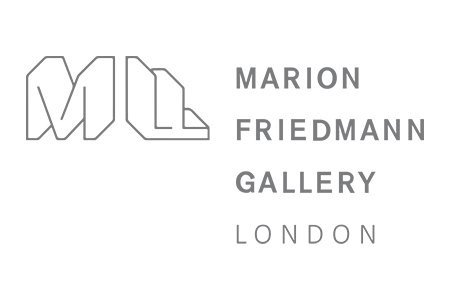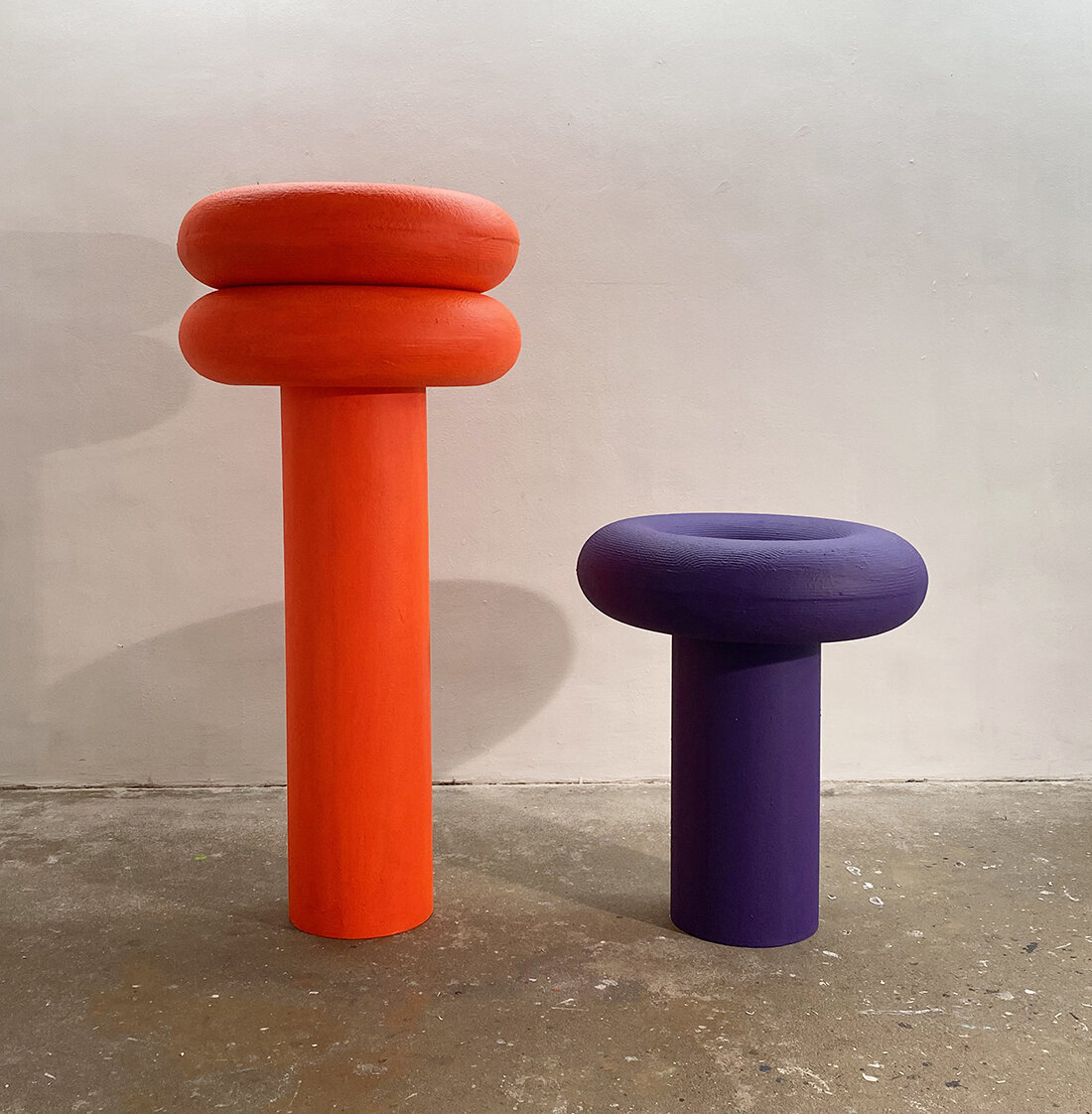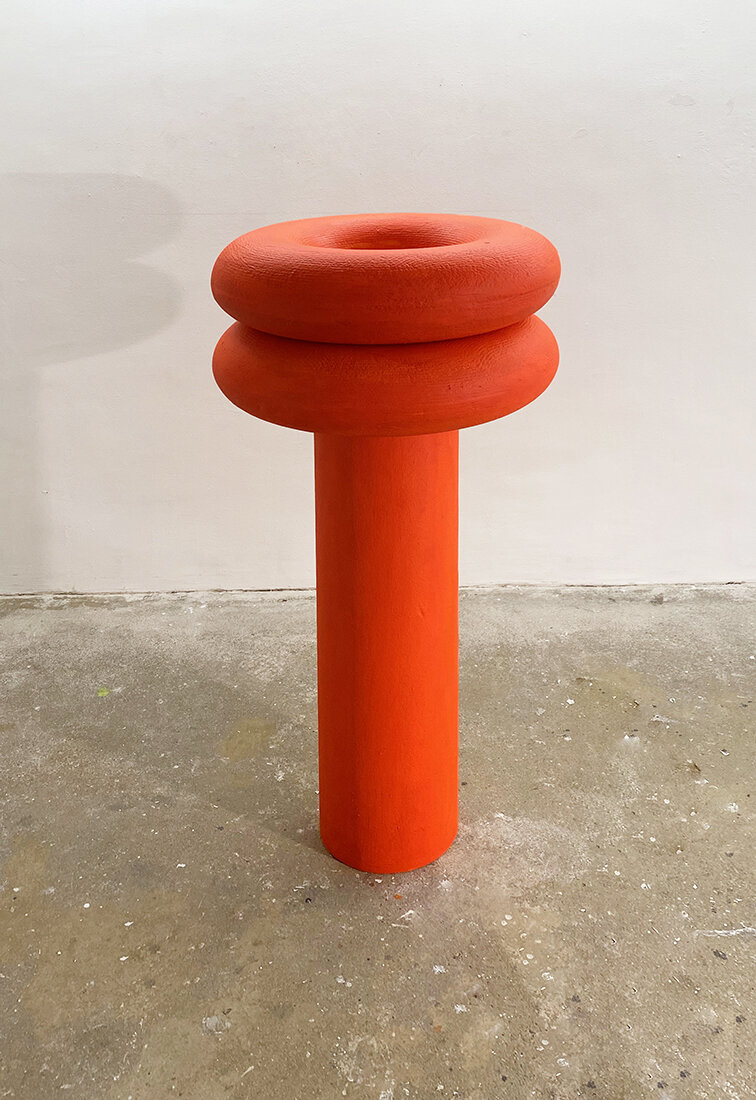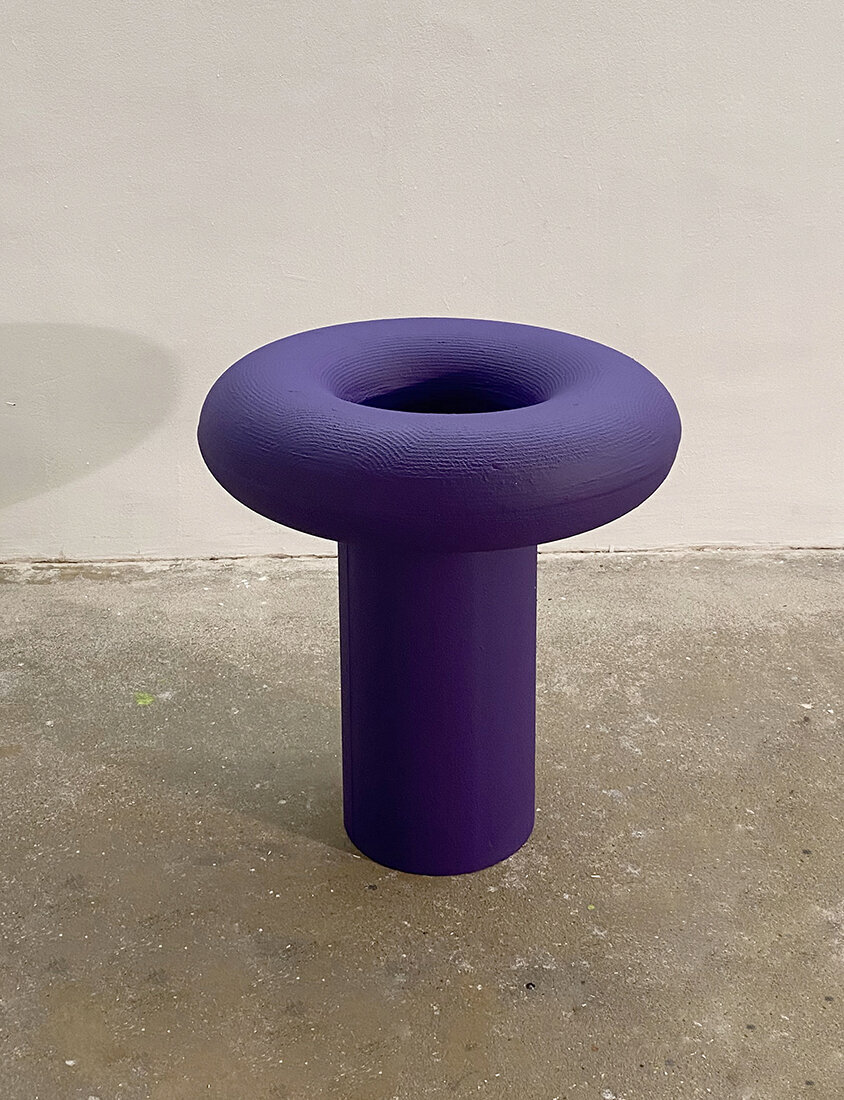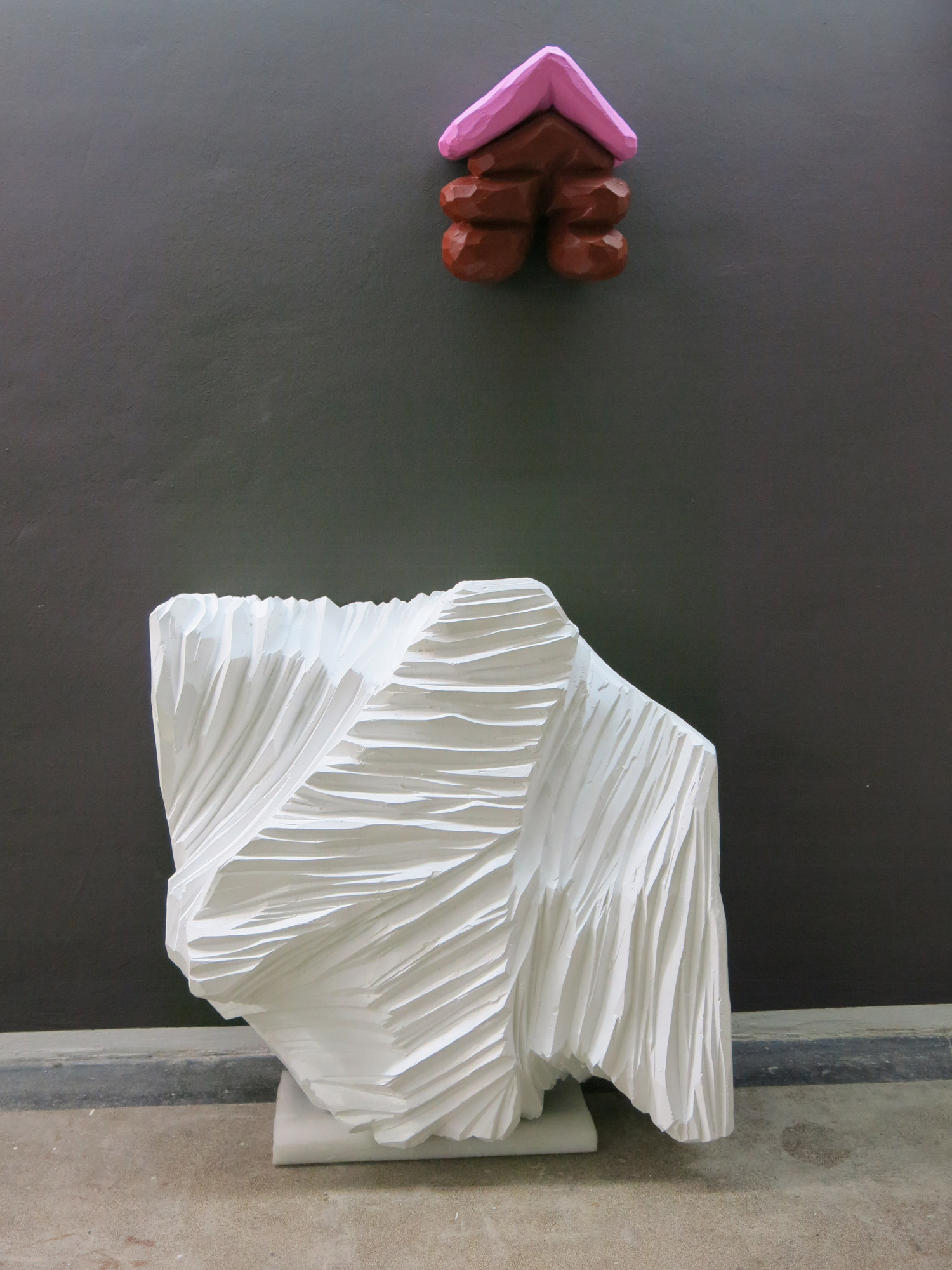GISELA STIEGLER
ABOUT
Gisela Stiegler (b. 1970, Austria) lives and works as an artist in Vienna. She holds an MA from the University of Applied Arts in Vienna, a degree in Photography from the Rietveld Academy in Amsterdam and a degree in painting from the Academy of Fine Arts in Vienna. In her work Stiegler refers to movements within art-history and examines at how they can be envisioned today (e.g. carving techniques from an old Austrian rural tradition or opulent baroque carving).
GISELA’s NEW COLUMN SCULPTURES:
Untitled, 2020
Carved and cast in artificial marble
65 x 70 cm & 65 x 120 cm
Edition of 5
O.T. Untitled - Wallscupture White
Within her sculptural body of work, Gisela Stiegler has been exploring and carving expanded polystyrene for more than ten years as her main raw material to work with. Over those years she has been developing a fascinating evolution and perfection of her technique and the treatment of this delicate and cutting edge contemporary material. She has also created an acclaimed series of lamps from recycled fish-boxes which she finely carves and lacquers. Her lamps are ready, closed, and finished objects, whereas her other sculptural work pleads for further work and experiment. The pieces are lacquered in silver, white, blue, steel, or bronze. This is when the pieces enter into conversation with the ‘other’. They become another kind and fake a long-gone time as well as another material and weight, appearing like architecture or monoliths, however alive.
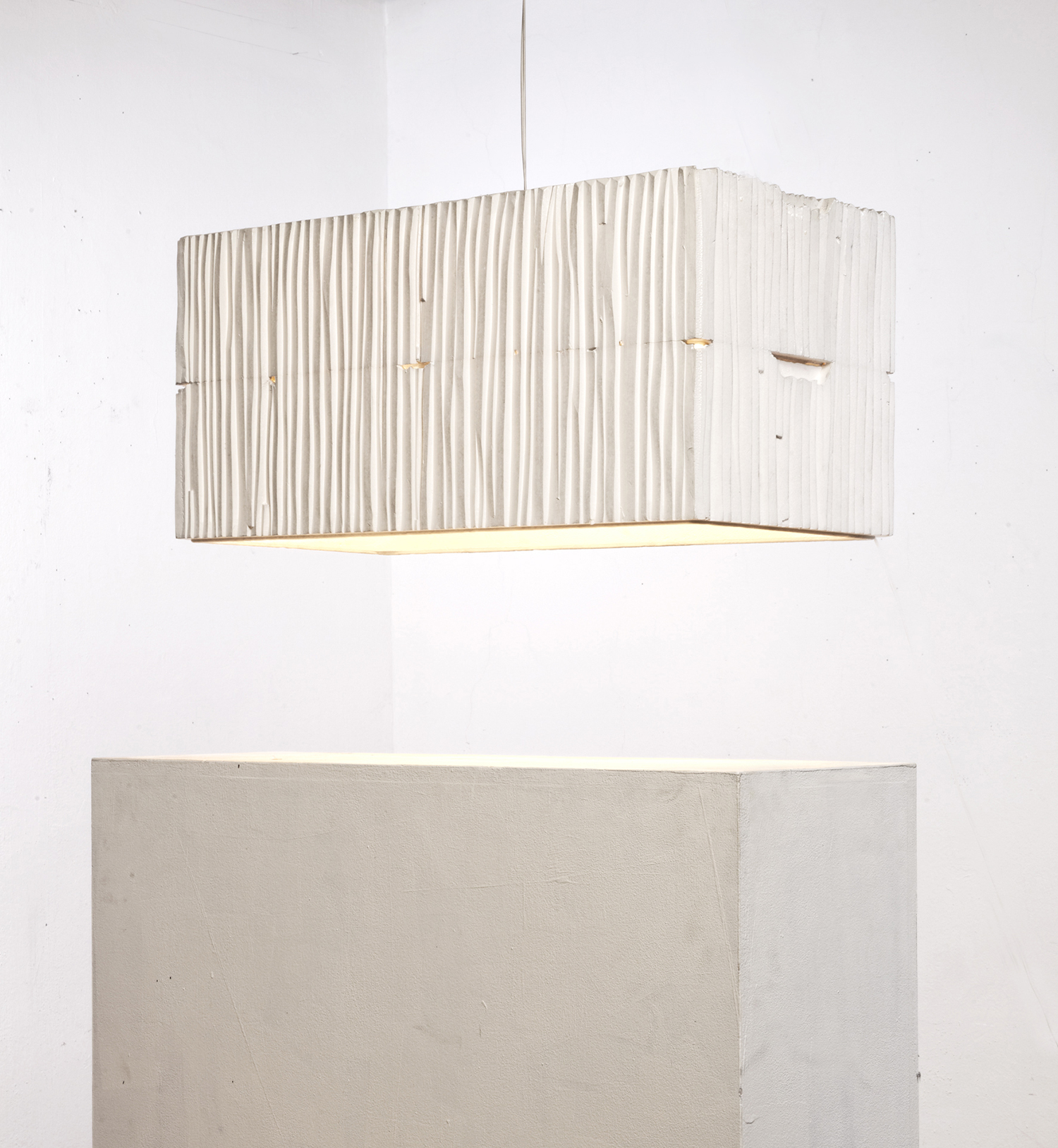

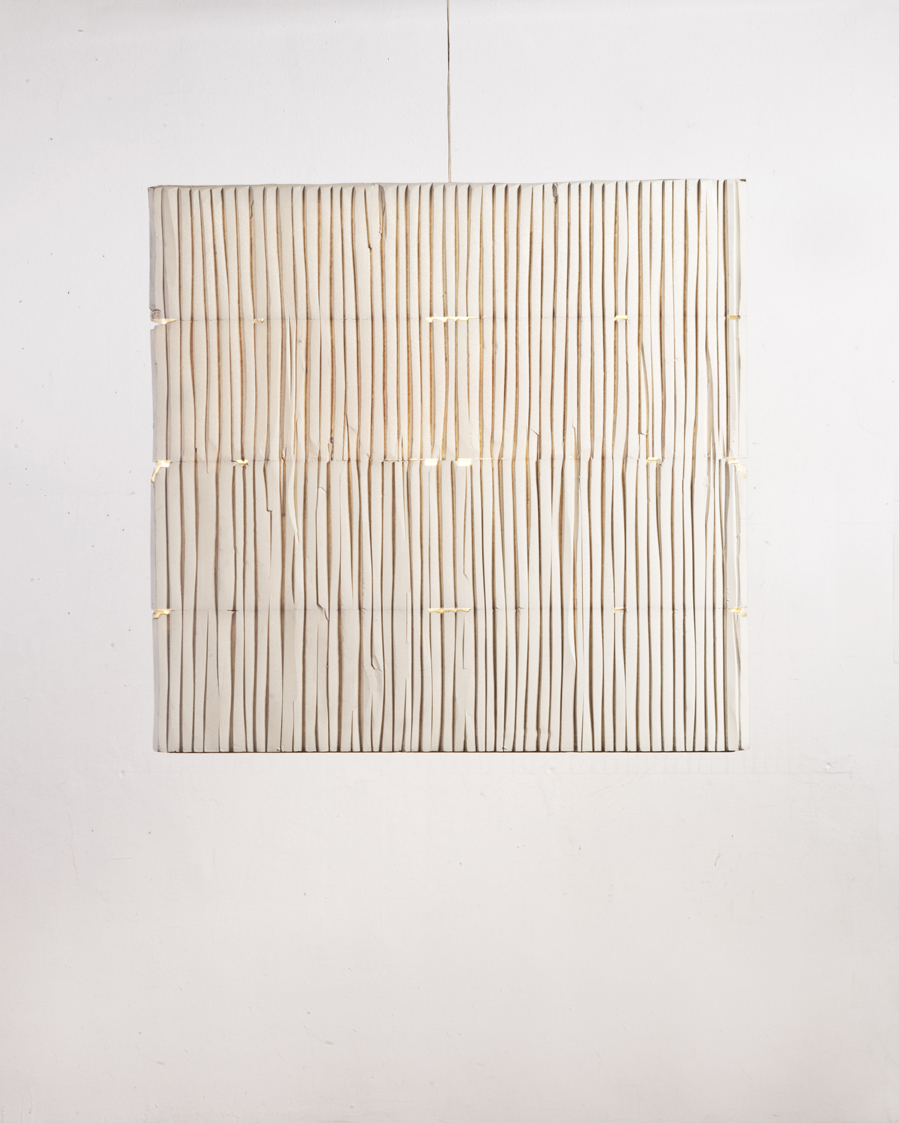
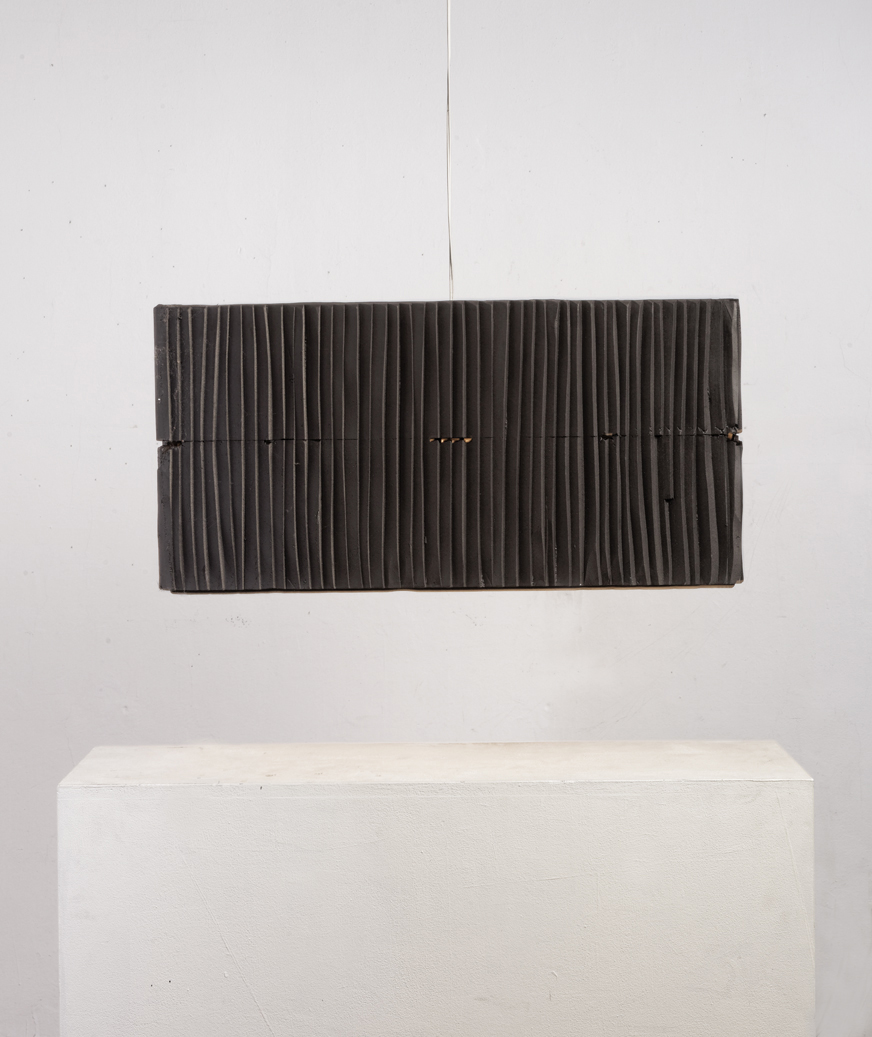
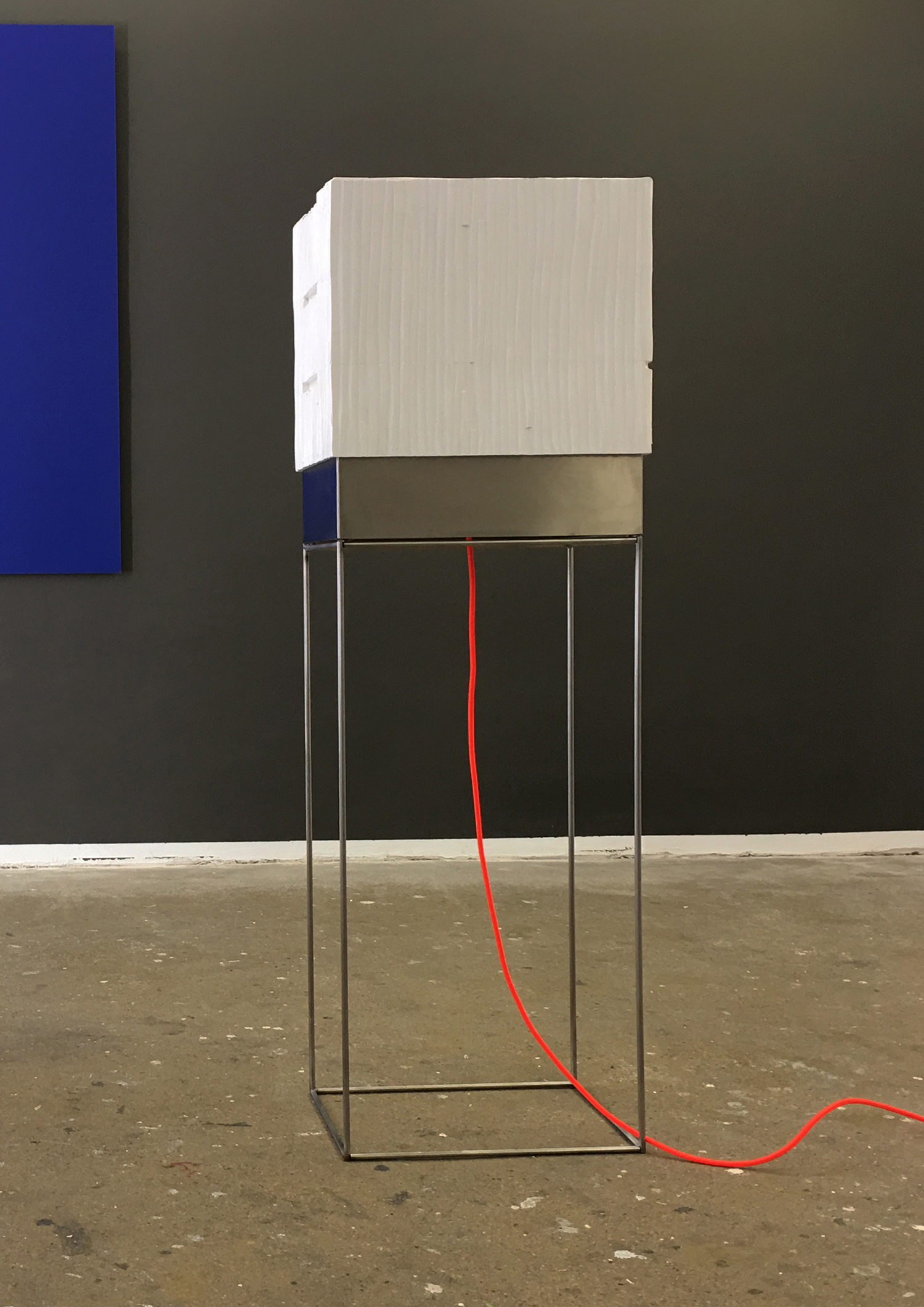
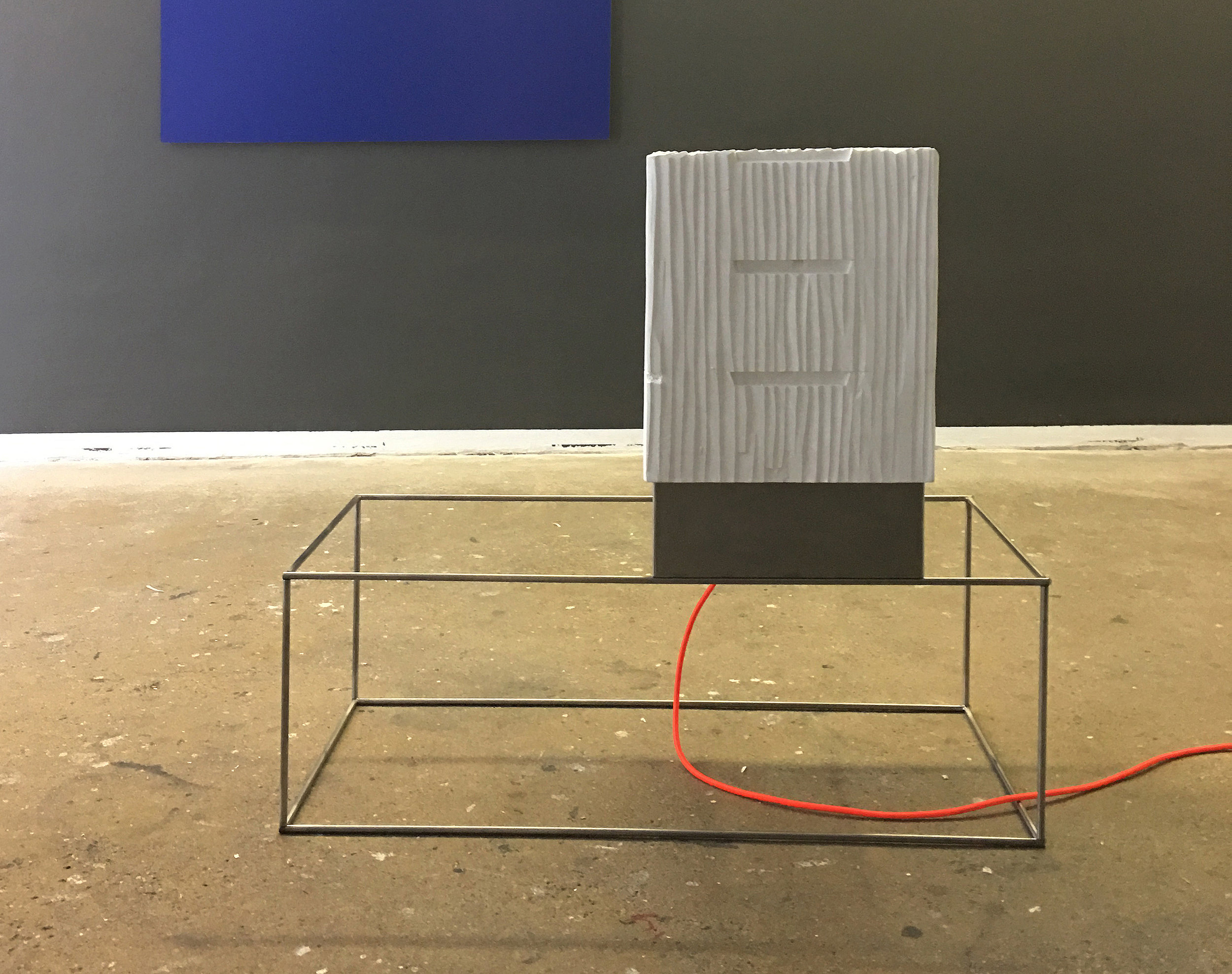
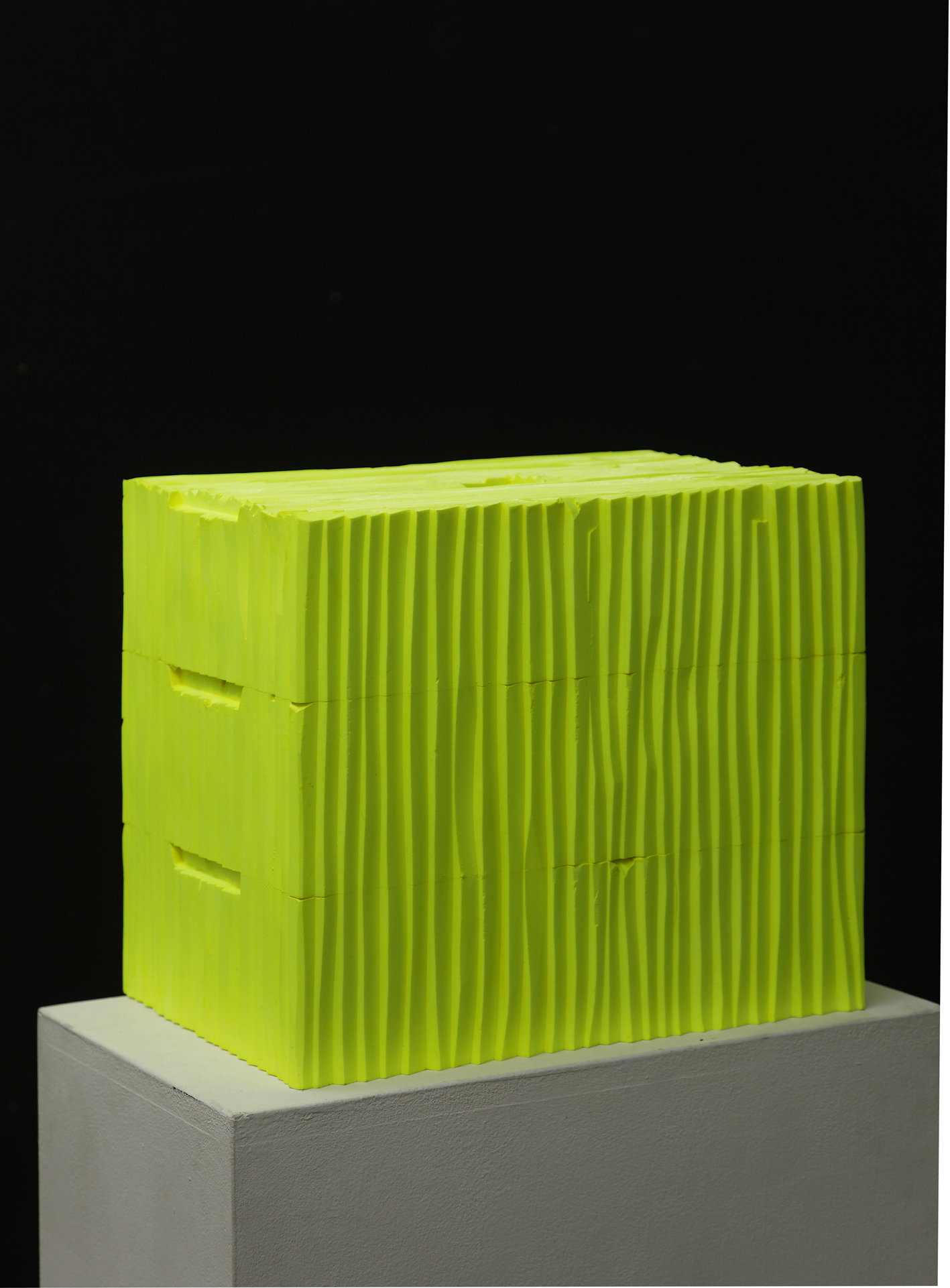

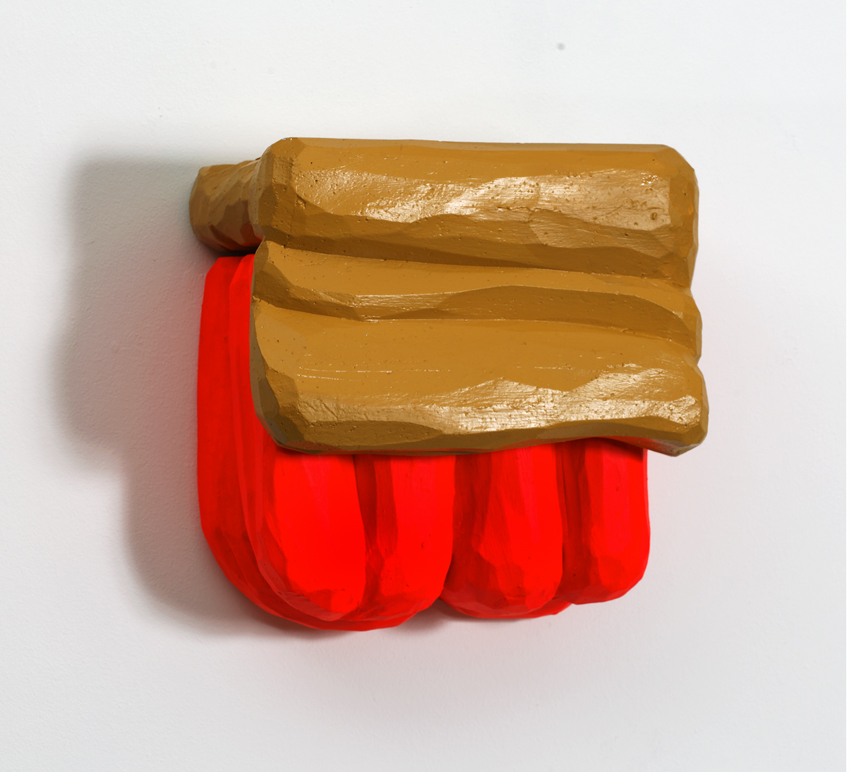
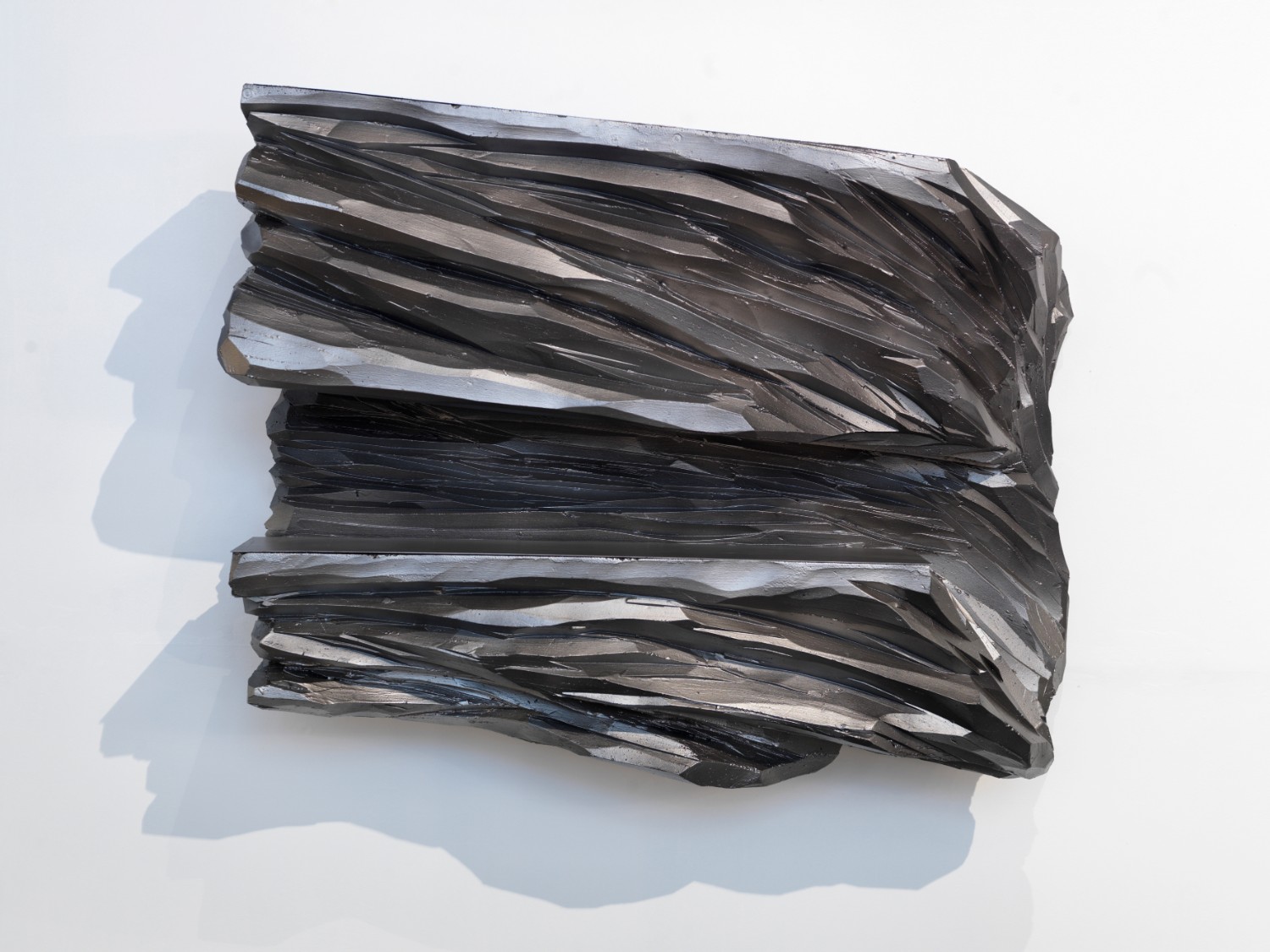
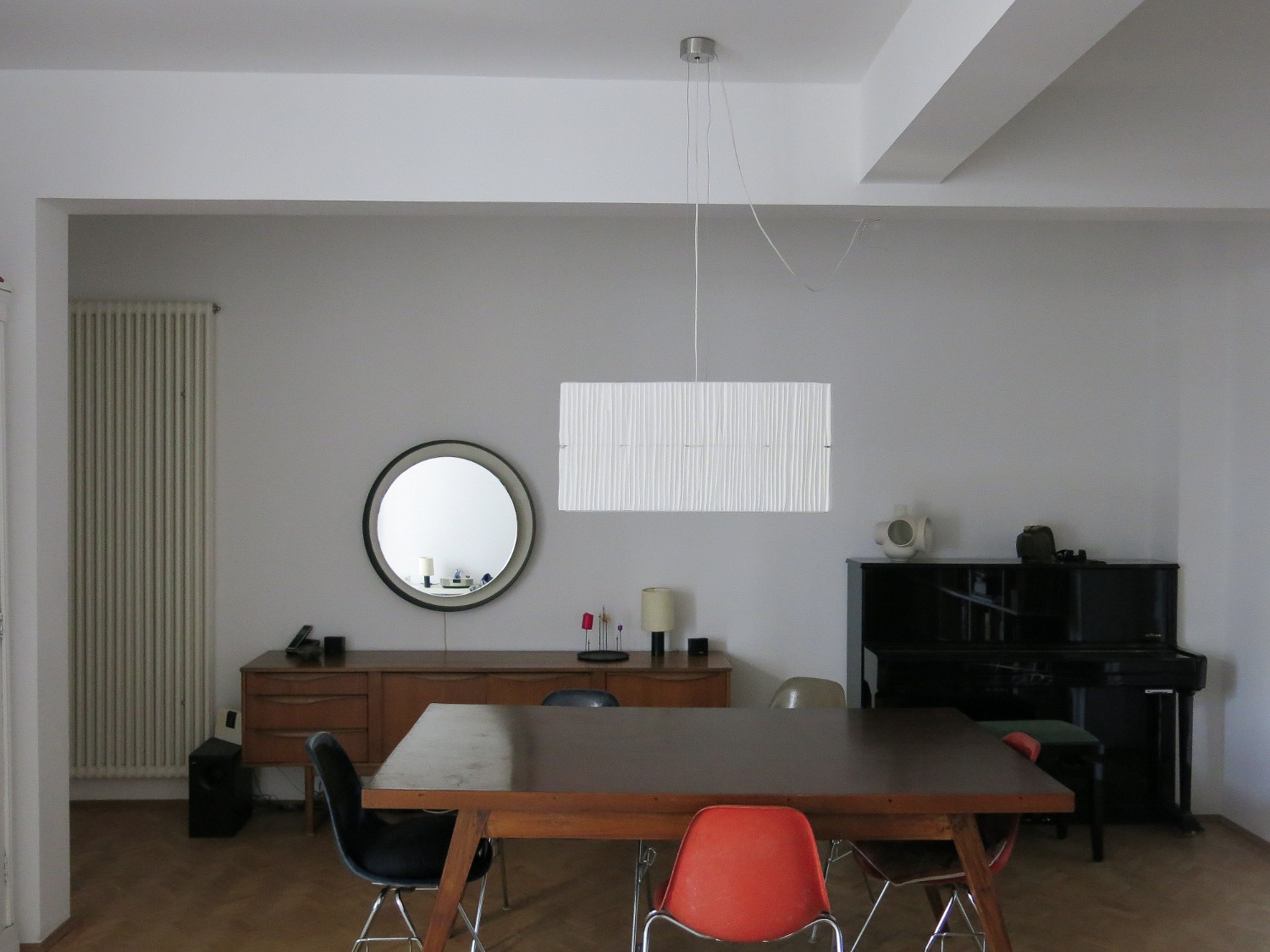
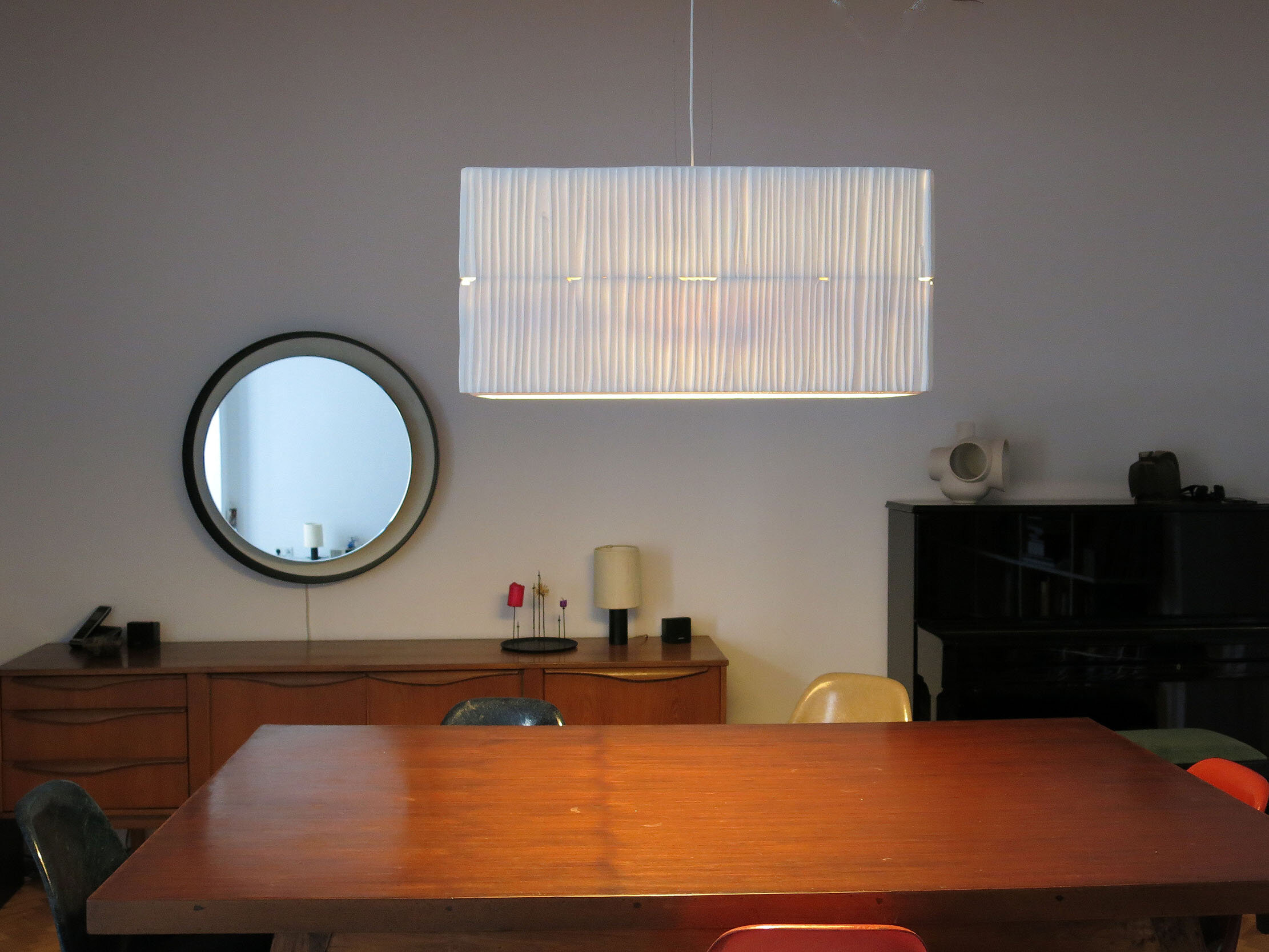


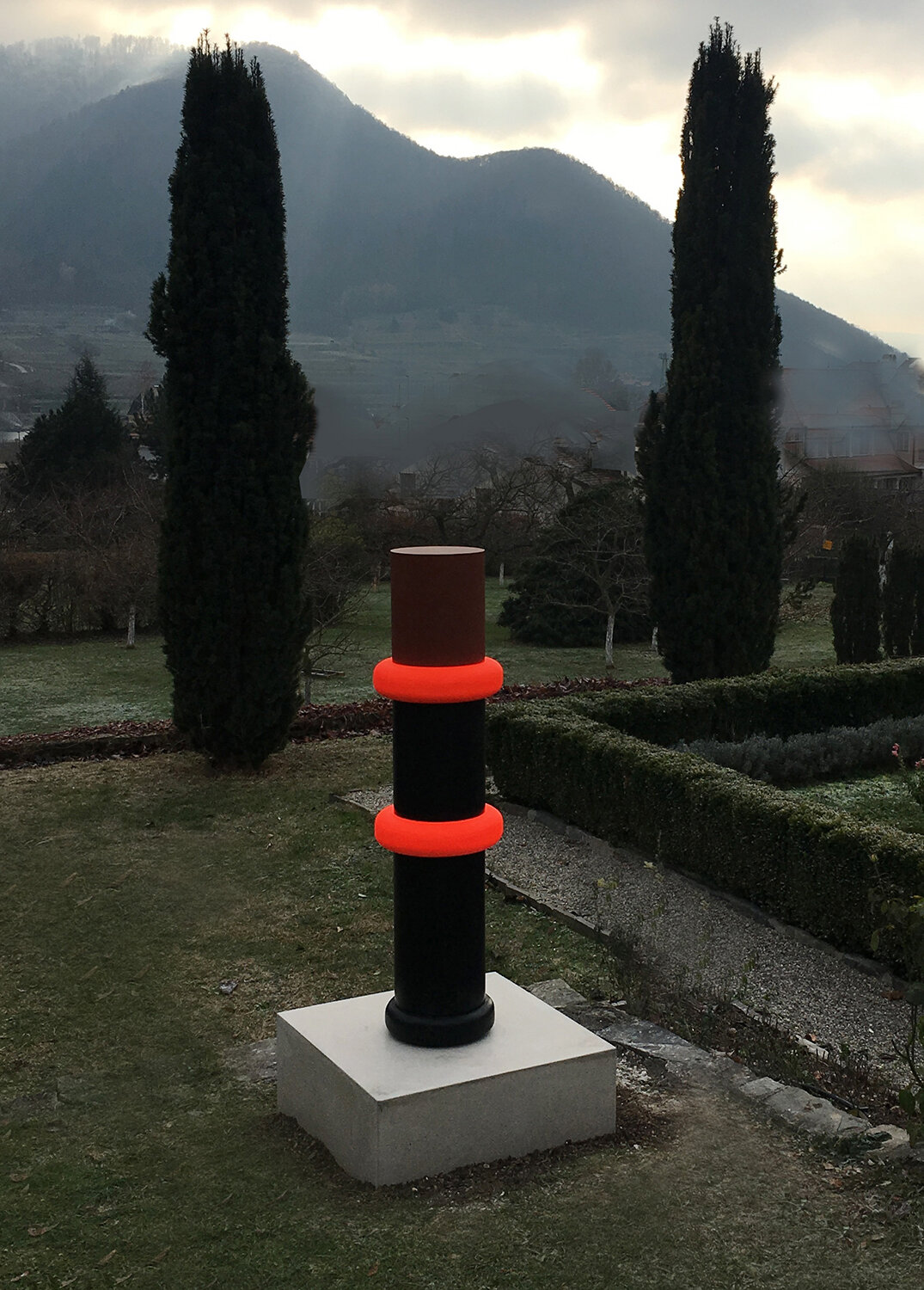
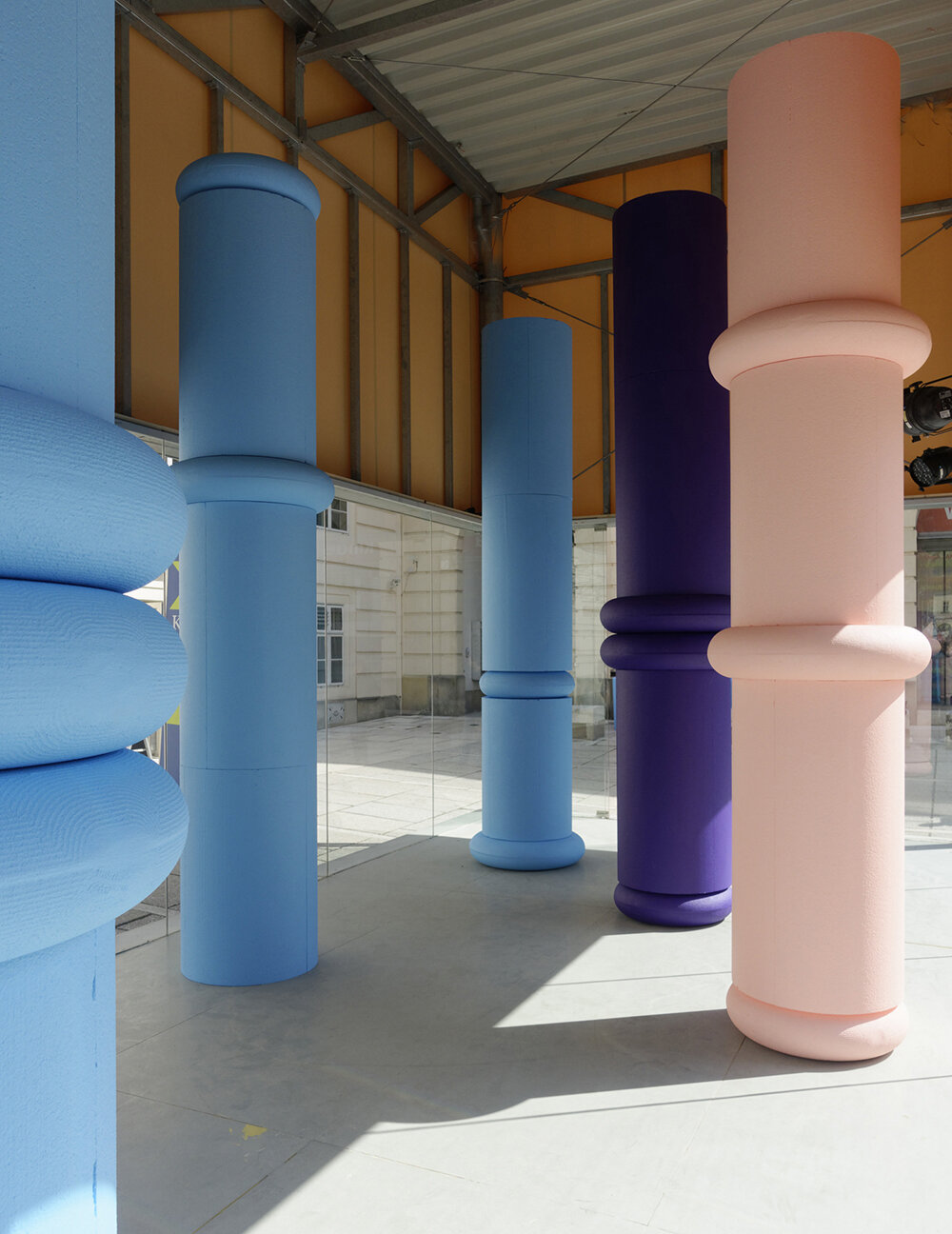

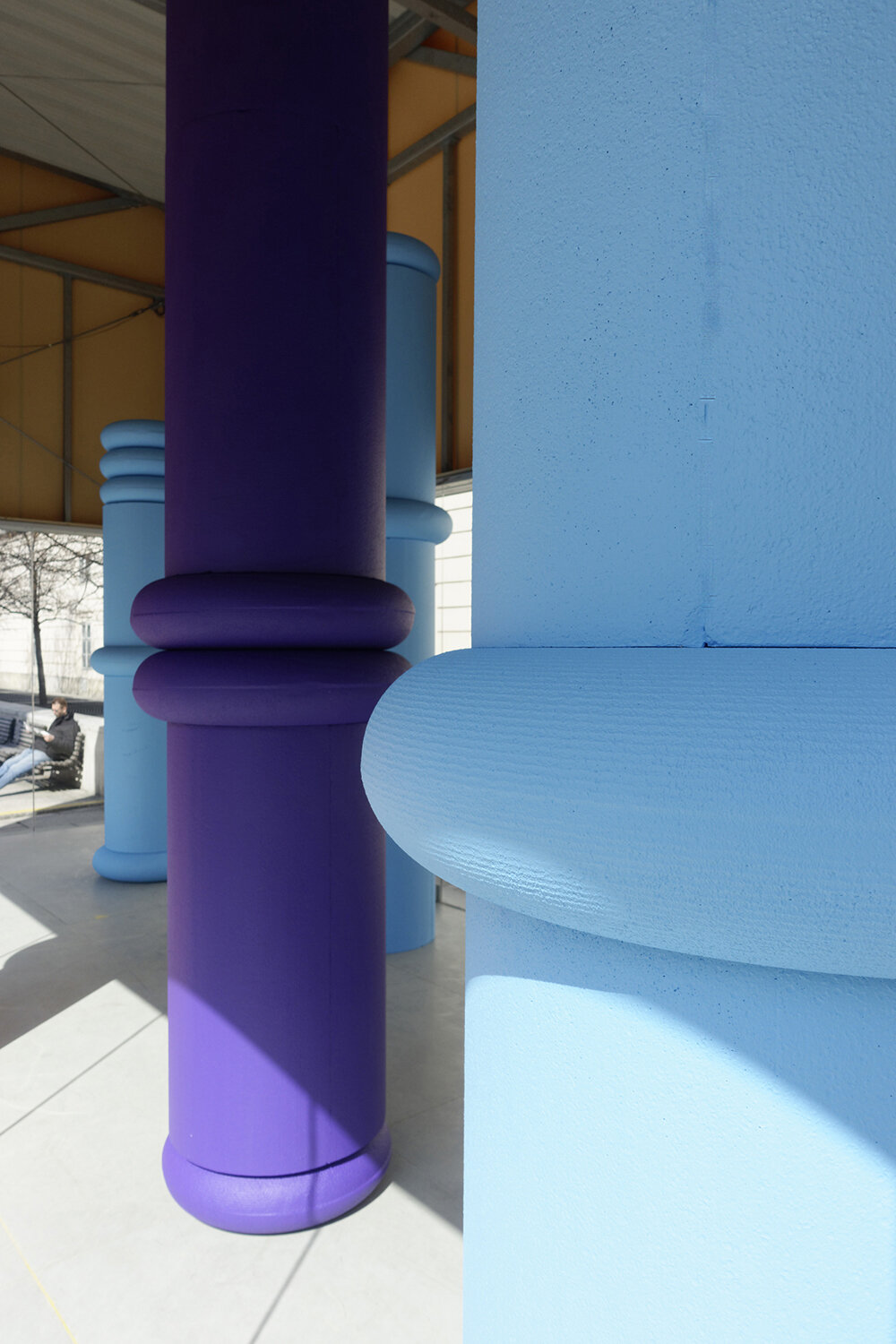
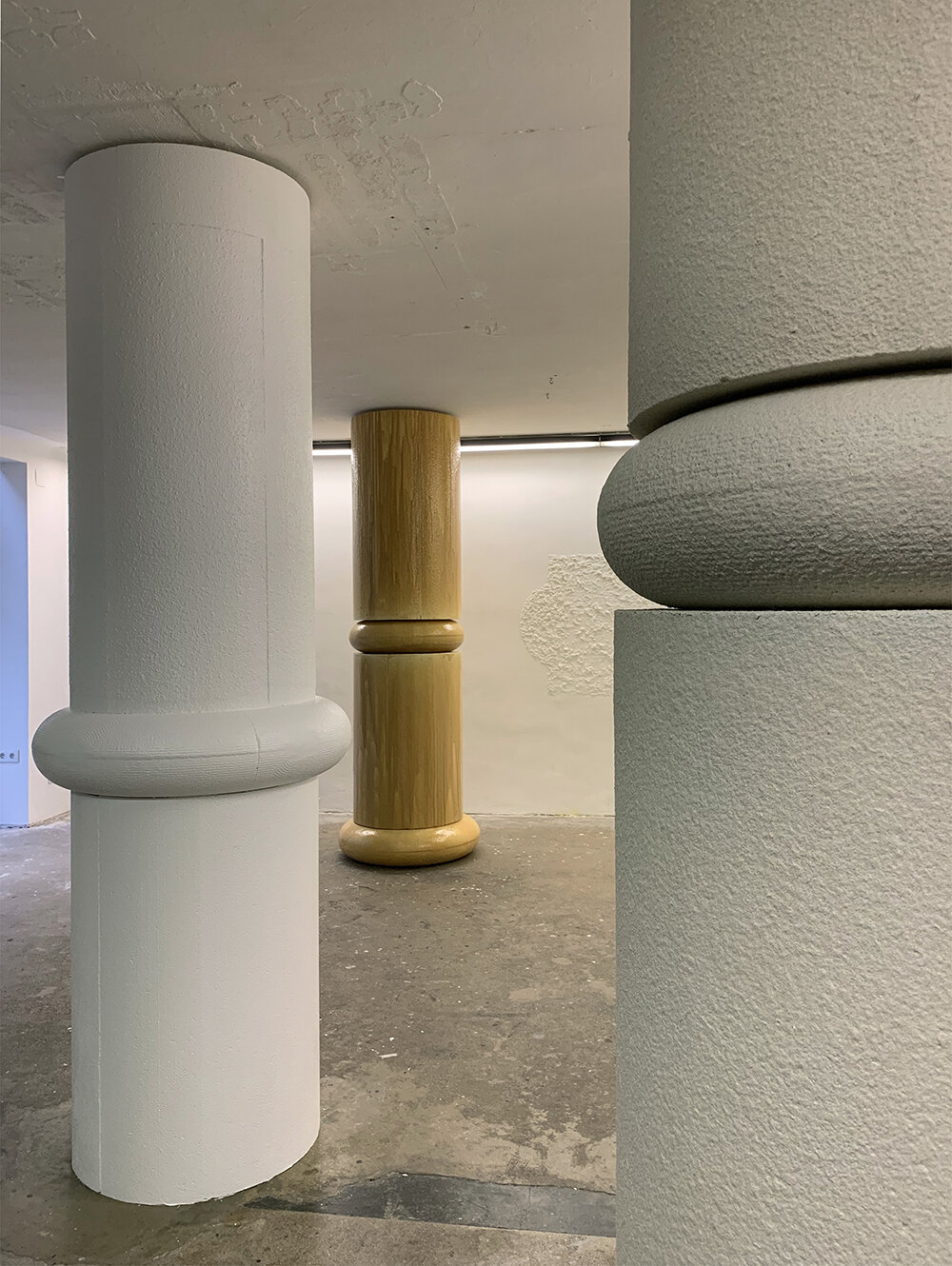
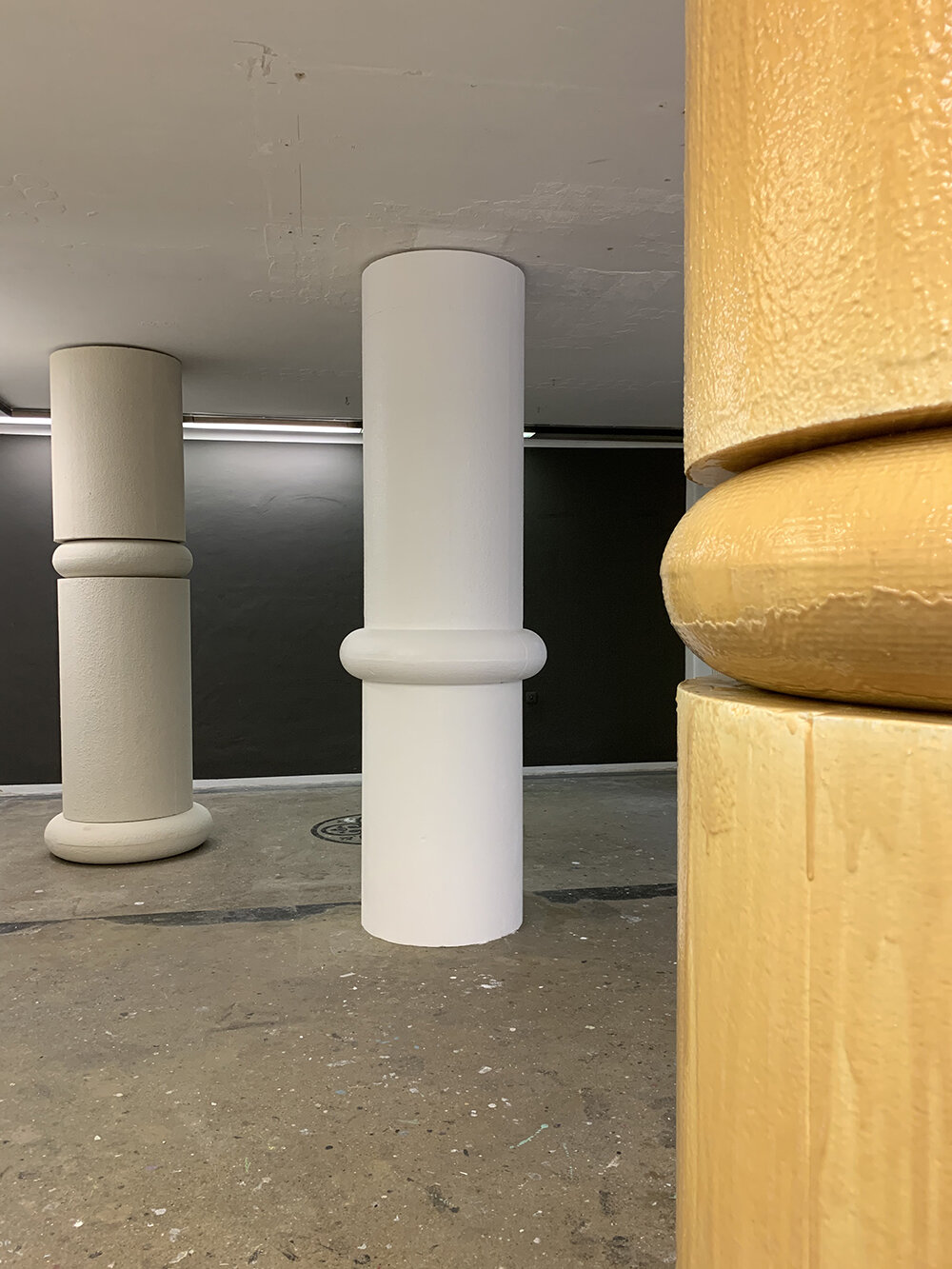
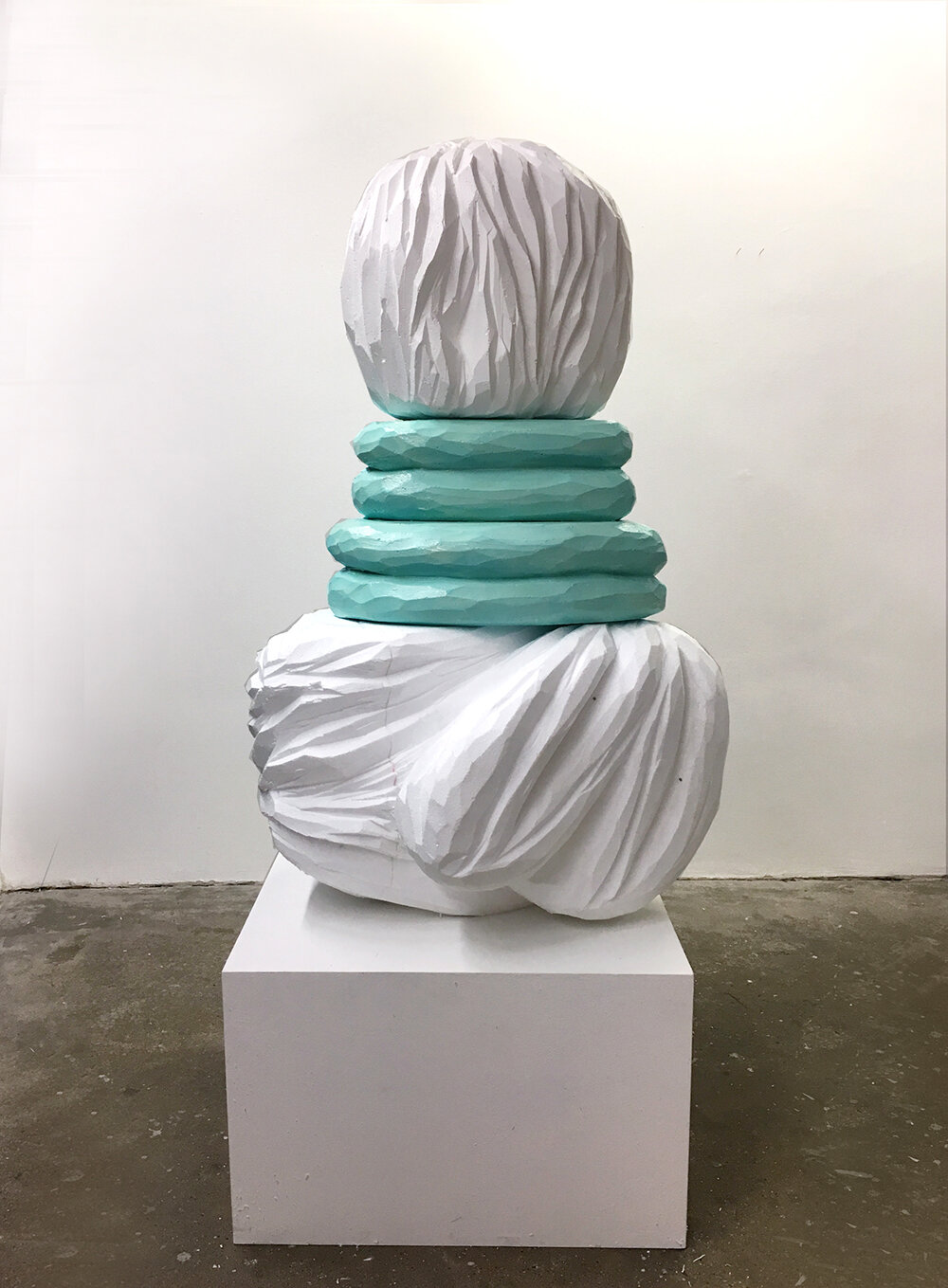
LAMPS
SCULPTURE / WALLPIECes
BIO/CV
2021 Artist in Residence BKA, Moscow
2019 Artist in Residence, “Villa mon Charme”, Brussels
2010 Artist in Residence (Lillian Baylis School, Marion Friedmann) London 2007 Artist in Residence (Austrian State grant), Paris
2005 Founder of the Project GRAUZONE, Vienna
2003 State Award for Photography 2003 Foto-documentary of Tibet, China
2003 Atelier Grant, Paliano, Italy
2001 Artist in Residence (Austrian State grant), Rome 1999 Diploma at the Academy of Fine Arts, Vienna 1996-1997 State bursary, Rietfeld Academy, Amsterdam 1991-1995 MA University for Applied Arts, Vienna
EXHIBITIONS (solo and group shows, selection)
2020 Installtion at Art Fair; ‘Parallel Vienna’
2020 “Black & White”, Nöart, Upper Austria, Austria
2019 “Akropolis 21”, Artbox, art in public space, Museum Quarter, Vienna Austria
2018 Art – Design? QuadrART Dornbirn
2018 Oswald Oberhuber and Gisela Stiegler, Galerie Rauminhalt_Harald Bichler 2018 „Ästhetik der Veränderung“, Museum für Angewandte Kunst,
2017 ArtAustria, Palais Lichtenstein, Galerie Armann / Ruberl
2017 Art Vienna, group show, with Galerie Ruberl, Vienna
2017 Solo show, Rauminhalt, Vienna,
2016 “The Artist and his Double”, Galerie Ruberl, Vienna
2015 “Delicacy Revisited”, Marion Friedmann Gallery, London
2015 Art Athina, “Grauzone”, Athens
2015 “Sportcafe, Oper...”, “Kubatur”, Fluc, Vienna
2014 “Delicacy” with Marion Friedmann Gallery at MIART, MIlan
2014 “Lampenfieber”, Duo Raum, Vienna 2014 “Multiple Times”, Campoi Gallery, München
2013 “ANSAMMLUNGCAMPOI”, c/o Pilotprojekte, Düsseldorf 2013 “IBDF Abierto Méxicano de Diseño”, Marion Friedmann Gallery “Parallel Vienna”, Kunstraum am Schauplatz, Wien
ATELIER
processes
2013 Prawneg & Wolf, Italien
2012 “Art&Function”, “Art&Antik”, Wien Hofburg, “Designart”, Innsbruck 2012 “Sail against the end”, Grauzone am Ufer, Wien
2012 “Designjunction”, MarionFriemann Gallery, London
2011 “Das Double und sein Theater”, Weindorf
2011 “Superdesign”, Marion Firedmann Gallery, London
2011 “Enlightened Waste”, Marion Friedmann Gallery, London
2011 “Objekte 2011”, Kunst/Handel 2011“today is tomorrow”, Artist Association Maerz, Linz
2011 Viennafair, SOS
2010 Herzfoundation, Viennabiennale
2010 MAK-night, Viennabiennale
2010 Mandragora, Kunstraum am Schauplatz
2009 “Nachbildung einer Wand” , Galerie Strickner,
2008 “Wiederherstellung einer Idee”, Grauzone
2007 Bank Austria, Tresorraum
2006 „inforNation” State of Sabotage, Istanbul
2006 „Konstruktionen und Seestücke”, Galerie CC, Graz
2005 Ausstellung „Grauzone” „Burggasse 100”
2004 „Natura Morta” Kulturforum Rom
2003 Thomas K. Lang Gallery, Webster University
2003 „Nuit blanche”, Paris, kur. Robert Fleck
2002 „art position” „As soon as possible” kur. Zenita Komad
2001 Chronos-roma, Rom
2000 Galerie Trabant, Messe Berlin
1998 „I’m on”, Semper Depot
1997 Alpenmilchzentrale „2 plateaux” Mezzanin
1997 Institut für Gegenwartskunst
